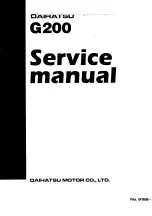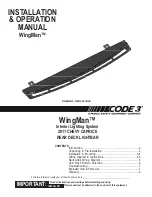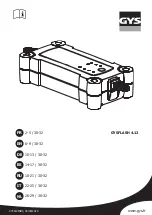
WARNING!
• Wearing your seat belt incorrectly could make your injuries in a collision much worse.
You might suffer internal injuries, or you could even slide out of the seat belt. Follow
these instructions to wear your seat belt safely and to keep your passengers safe, too.
• Two people should never be belted into a single seat belt. People belted together can
crash into one another in a collision, hurting one another badly. Never use a
lap/shoulder belt or a lap belt for more than one person, no matter what their size.
• A lap belt worn too high can increase the risk of injury in a collision. The seat belt
forces won’t be at the strong hip and pelvic bones, but across your abdomen. Always
wear the lap part of your seat belt as low as possible and keep it snug.
• A twisted seat belt may not protect you properly. In a collision, it could even cut into
you. Be sure the seat belt is flat against your body, without twists. If you can’t
straighten a seat belt in your vehicle, take it to your authorized dealer immediately
and have it fixed.
• A seat belt that is buckled into the wrong buckle will not protect you properly. The lap
portion could ride too high on your body, possibly causing internal injuries. Always
buckle your seat belt into the buckle nearest you.
• A seat belt that is too loose will not protect you properly. In a sudden stop, you could
move too far forward, increasing the possibility of injury. Wear your seat belt snugly.
• A seat belt that is worn under your arm is dangerous. Your body could strike the inside
surfaces of the vehicle in a collision, increasing head and neck injury. A seat belt
worn under the arm can cause internal injuries. Ribs aren’t as strong as shoulder
bones. Wear the seat belt over your shoulder so that your strongest bones will take the
force in a collision.
• A shoulder belt placed behind you will not protect you from injury during a collision.
You are more likely to hit your head in a collision if you do not wear your shoulder belt.
The lap and shoulder belt are meant to be used together.
• A frayed or torn seat belt could rip apart in a collision and leave you with no
protection. Inspect the seat belt system periodically, checking for cuts, frays, or loose
parts. Damaged parts must be replaced immediately. Do not disassemble or modify
the seat belt system. Seat belt assemblies must be replaced after a collision.
G E T T I N G S T A R T E D
17
Содержание journey 2017
Страница 173: ...NOTES 171...
Страница 174: ...NOTES 172...
Страница 175: ...NOTES 173...
Страница 176: ...NOTES 174...
Страница 177: ...NOTES 175...
Страница 178: ...NOTES 176...
















































